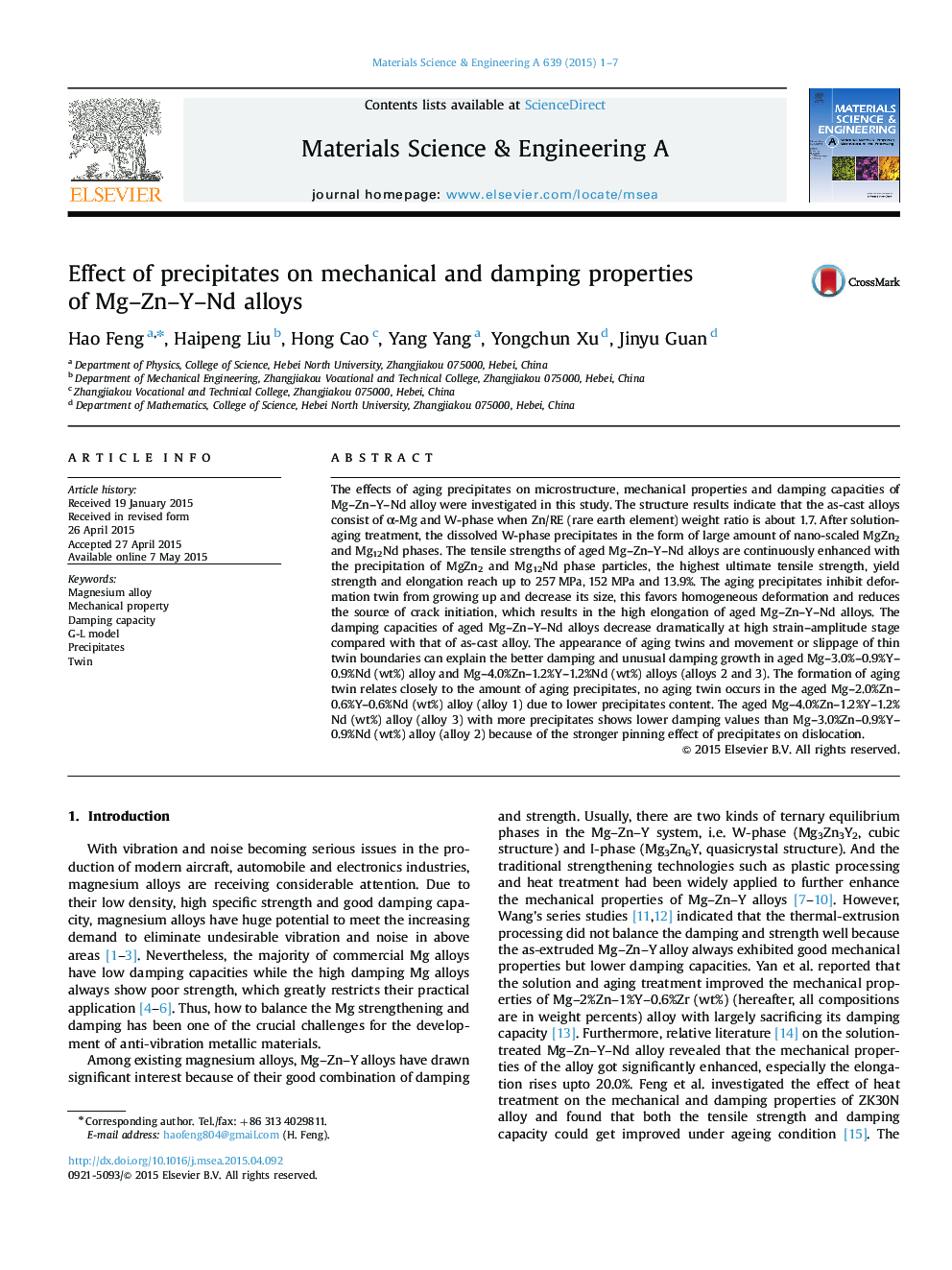| Article ID | Journal | Published Year | Pages | File Type |
|---|---|---|---|---|
| 7977453 | Materials Science and Engineering: A | 2015 | 7 Pages |
Abstract
The effects of aging precipitates on microstructure, mechanical properties and damping capacities of Mg-Zn-Y-Nd alloy were investigated in this study. The structure results indicate that the as-cast alloys consist of α-Mg and W-phase when Zn/RE (rare earth element) weight ratio is about 1.7. After solution-aging treatment, the dissolved W-phase precipitates in the form of large amount of nano-scaled MgZn2 and Mg12Nd phases. The tensile strengths of aged Mg-Zn-Y-Nd alloys are continuously enhanced with the precipitation of MgZn2 and Mg12Nd phase particles, the highest ultimate tensile strength, yield strength and elongation reach up to 257 MPa, 152 MPa and 13.9%. The aging precipitates inhibit deformation twin from growing up and decrease its size, this favors homogeneous deformation and reduces the source of crack initiation, which results in the high elongation of aged Mg-Zn-Y-Nd alloys. The damping capacities of aged Mg-Zn-Y-Nd alloys decrease dramatically at high strain-amplitude stage compared with that of as-cast alloy. The appearance of aging twins and movement or slippage of thin twin boundaries can explain the better damping and unusual damping growth in aged Mg-3.0%-0.9%Y-0.9%Nd (wt%) alloy and Mg-4.0%Zn-1.2%Y-1.2%Nd (wt%) alloys (alloys 2 and 3). The formation of aging twin relates closely to the amount of aging precipitates, no aging twin occurs in the aged Mg-2.0%Zn-0.6%Y-0.6%Nd (wt%) alloy (alloy 1) due to lower precipitates content. The aged Mg-4.0%Zn-1.2%Y-1.2%Nd (wt%) alloy (alloy 3) with more precipitates shows lower damping values than Mg-3.0%Zn-0.9%Y-0.9%Nd (wt%) alloy (alloy 2) because of the stronger pinning effect of precipitates on dislocation.
Related Topics
Physical Sciences and Engineering
Materials Science
Materials Science (General)
Authors
Hao Feng, Haipeng Liu, Hong Cao, Yang Yang, Yongchun Xu, Jinyu Guan,
